This tutorial gives a detailed guide to understanding what is Python and how can an untrained or newbie programmer install Python on Windows 7, Windows 8 or Windows 10. This tutorial also covers the concept of PyCharm on Python.
Contents
What is Python?
Python is a high-level interpreter based interactive and object-oriented scripting language. It was designed by Guido Van Rossum and was released in the year 1991. It has been designed to be highly readable and uses simple English keywords frequently. This was missing in many other languages that use punctuation.
What makes python different from other programming languages?
Python is nowadays most widely used general-purpose high-level programming language. One of its main features is code readability. Its syntax also allows programmers to express their concepts in fewer lines of codes. This was missing in many of the previously known languages. Python also supports multiple programming paradigms that mainly includes object-oriented, imperative and functional programming or procedural styles. It has an automatic memory management system and includes a large and comprehensive standard library. This simply means that it is versatile and efficient to learn. It may be possible that some users find it difficult to lean but it definitely a language to explore.
Features of Python
Python has various features that have made programming easier and more easy to understand for users. Now let’s learn about its features that makes it different from others:
- Easy to learn: It has very few keywords. There are only 33 keywords in Python 3.6. So it has a simple structure and a well-defined syntax. This allows students to easily learn and implement it.
- Easy-to-maintain: Its source code is fairly easy to maintain.
- It also has the support for an interactive mode that allows programmers to test and debug their program easily.
- Portability: It is portable also. This simply means that it can easily run on a wide variety of hardware platforms. Also, it has the same interface on all the platforms. So the programmer doesn’t need to worry about the cross-platform testing of their program.
- It also allows the programmers to add low-level modules to its interpreter. These modules are mainly helping programmers to add or customize their tools to make them more efficient.
- One of the main features of Python is that it supports functional and structured programming method as well as object-oriented programming.
Lastly, one of the most important features is that it is easy to integrate with other languages. Here is a list of some of Python’s implementations of other languages:
- CPython: It is an integration of Python with one of the oldest programming language C.
- Jython: Integration of Python with Java.
- Iron Python: It is the integration with .NET framework.
- Stackless: This implementation is mostly used when there is a need for concurrency.
- PyPy: This implementation is mainly used for speed.
Applications of Python
It has various uses in many application domains. Here is a sample of some of the domains that use it.
Internet Development: It includes many frameworks which are mostly used for web development. It includes frameworks such as Django and Pyramid and some micro-frameworks such as Flask and Bottle. These frameworks are very helpful in terms of web and internet development. Python’s standard library also supports various Internet protocols such as HTML and XML, JSON, E-mail processing. It also includes support for FTP, IMAP, and many other internet protocols.
Scientific and Numeric Computing: It is one of those languages that is widely used in scientific and numeric computing. SciPy, a collection of mathematics, science, and engineering is a package mainly used for the scientific purpose. Python also includes a data analysis and modeling library Known as Pandas. IPython is a powerful interactive shell for parallel computing. IPython features easy editing and recording of a work session and also supports visualizations.
Apart from these applications it also has its applications for educational purposes, Desktop GUI and Software Development.
Top and biggest websites built with Python
Python is one of the most useful programming languages for web applications. Its web development frameworks such as Django, Flask are very popular. There are a number of websites that run on Django. Some of the websites that run on Python language are.
- Google: Google has been supporting Python since the very beginning. It is currently one of the official Google server-side languages. YouTube, one of Google’s main services is also written in Python and MySQL.
- Facebook: Facebook is another company that is also using Python. It is the third most popular language for the social media giant.
- Instagram: In 2016, the company claimed that they are running the world’s largest deployment of Django web framework.
- Dropbox: This cloud-based storage system uses Python in its desktop client. Both the Dropbox server (running in the cloud) and the client are written in Python.
Apart from these famous companies, there are various other companies that use Python. These include, Yahoo, Pinterest, Firefox, Spotify, Netflix and the list just goes on.
History of Python
In February 1991, Guido van Rossum released the codes (labeled as version 0.9.0) to the sources. Later on, with some new features, there was also release of some new versions. Here is a list of versions of the language.
- Python 1.x: Version 1.0 was released in January 1994. The major and new features were added in this version. Some functional programming tools such as
lambda,map,filterandreducewere added in this version. - Python 2.x: In this version list comprehension feature was added. This feature was previously available in functional programming languages SETL and Haskell. The new version also introduced a garbage collection system. This system was capable of collecting reference cycles.
- Python 3.x: This version was released on December 3, 2008, and currently it is Python 3.6.5. The main motive of designing of this version was to rectify some design flaws in the language.
System Specifications Required to install Python on Windows
- Processors: Intel Atom® processor or Intel® Core™ i3 processor or higher
- Disk space: At east 2 GB of disk-space
- Operating systems: Windows* 7 or later (Windows 8, Windows 8.1, Windows 10)
- Python* versions: 2.7.X, 3.6.X
- Included development tools: conda*, conda-env, Jupyter Notebook* (IPython)
- Compatible tools: Microsoft Visual Studio*, PyCharm*
- Included Python packages: NumPy, SciPy, scikit-learn*, pandas, Matplotlib, Numba*, Intel® Threading Building Blocks, pyDAAL, Jupyter, mpi4py, PIP*, and others.
How to install Python on Windows
Here are the steps that a user should follow to install Python on Windows.
Step I: First of all go to https://www.python.org and click on the version to download.
The total download size will be of about 30 MB. The installation will take about 100 MB hard drive space. So make sure to have some space on the hard drive.
Step II: After the completion of the download, go to Downloads and double click on the downloaded file. A new window will open. Click on Run.
Step III: A set-up window will pop up.
Select Install Now to proceed with the next installation step. Make sure to check the two checkboxes available at the bottom of the window.
Step IV: A User Account Control window will pop up. Select Yes from the window.
Step V: After that, a new Python installation window will appear. It will include a Setup Progress message and also a progress bar below it.
At the time of installation, the Setup window will show various components that will be installed in the system.
Step VI: After the completion of installation, a window will appear that will be showing a message Setup was successful. here the version of the Python has been successfully installed in the system.
Click on Close to exit from the setup window.
How to verify successful Python installation
In order to verify that whether the installation is successful or not, press Windows Key + R key. Run window will appear. Type cmd in the text box and select OK.
After that Command Prompt Window cmd will appear.
Type python in the window, the programmer will see >>> sign and the version of the Python in the system.
This will also verify that the installation process was successful. Now the programmer can use the cmd or Python IDLE to write python codes.
Python IDLE window will appear like this.
PyCharm for Python
PyCharm is one of the best IDE for Python programming. It provides code analysis, graphical debugger, unit tester and version control system. PyCharm supports one of popular web framework Django. It is available in two editions. The first edition is the Community Edition that is an open-source project and available free of cost. The other edition is Professional Edition which is commercial and includes some outstanding set of tools and features.
Requirements for Installing PyCharm
In order to install PyCharm in Windows, it requires at least 4 GB of RAM (8 GB should be very good). Also, it requires minimum 1.5 GB of hard disk space and 1 GB space for caches. Screen resolution of the system should be minimum 1024 X 768. The programmer will also need to install Java on the computer in order to run PyCharm, as JRE 1.8 comes in a bundle with the PyCharm distribution. The version of Python installed should be 2.4 or above.
How to install PyCharm for Python in Windows
Step I: Download PyCharm from the website. Select Community Edition or the Professional Edition according to choice.
Step II: After the completion of the download, go to Downloads folder and run the .exe file. The setup window will start.
Click on Next button to go to next step.
Step III: Now the installation window will ask about the path where the user wants to install it. 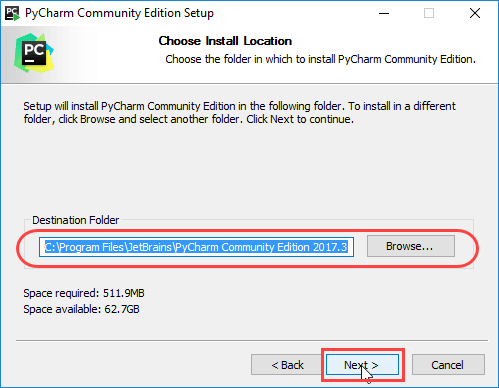
Change the path if required or else click on Next.
Step IV: The next window will ask if the user wants to create a Desktop shortcut or not.
Select the checkbox and click on Next.
Step V: Select the folder name to appear in the Start Menu. Then click on Install button.
Step VI: This will start the installation.
After the installation is complete, the above window will appear. Click on Finish to complete the installation and open the PyCharm IDE.
Now, this completes the tutorial steps. I am hopeful that emerging programmers will find this tutorial useful. Python is currently one of the important languages that every programmer should definitely learn. At the beginning of learning, it might seem to be difficult but it is one of the most interesting languages to learn. Also, a programmer will always find a new thing regarding it that will motivate them to learn it.





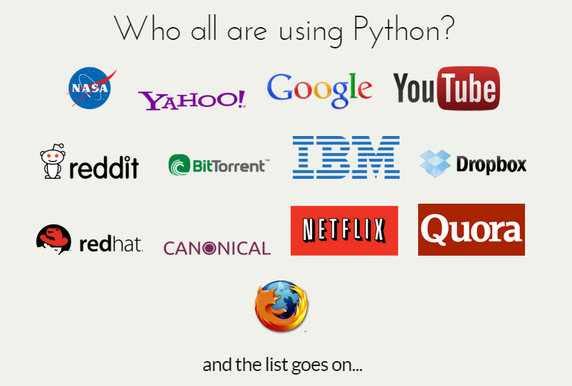
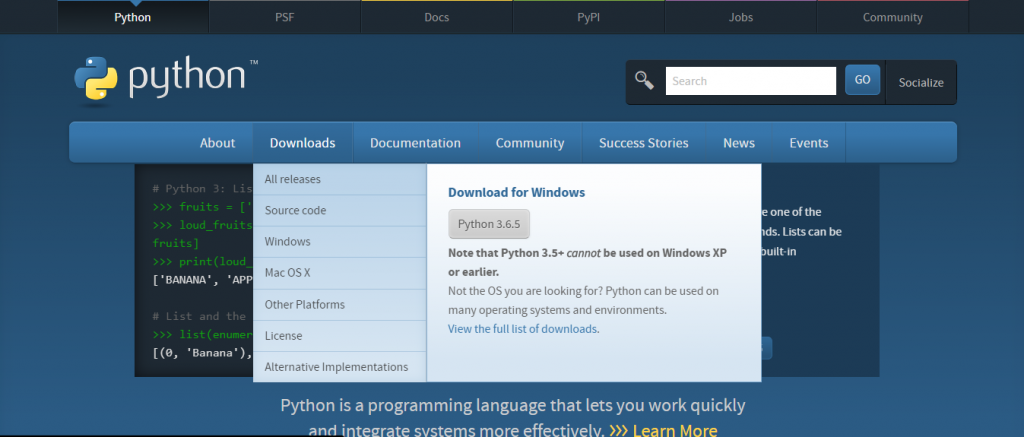


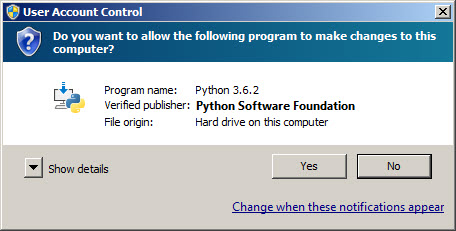

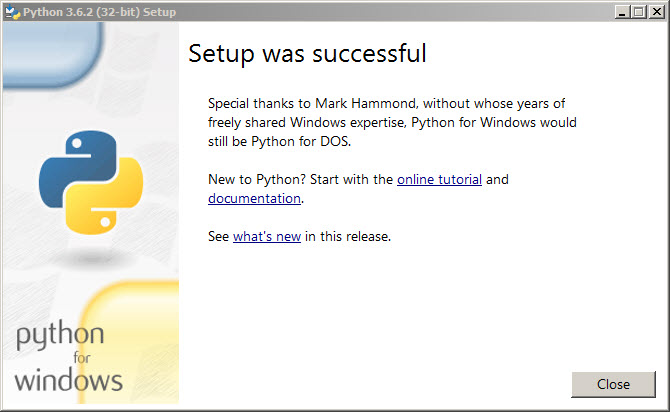

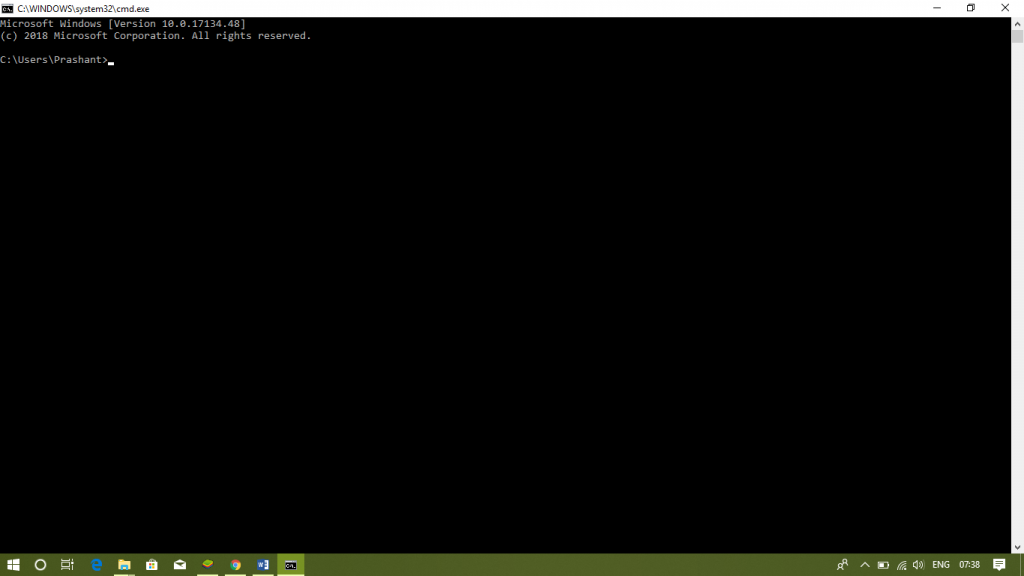

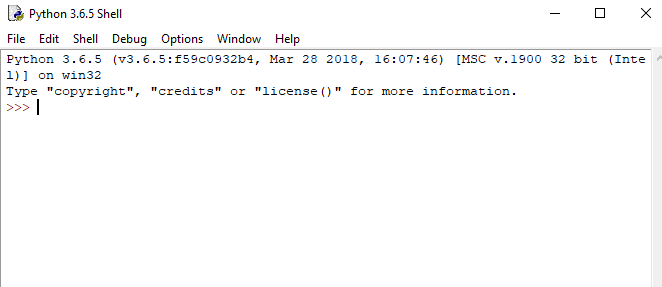
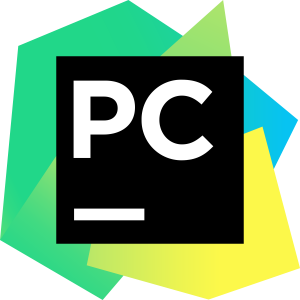
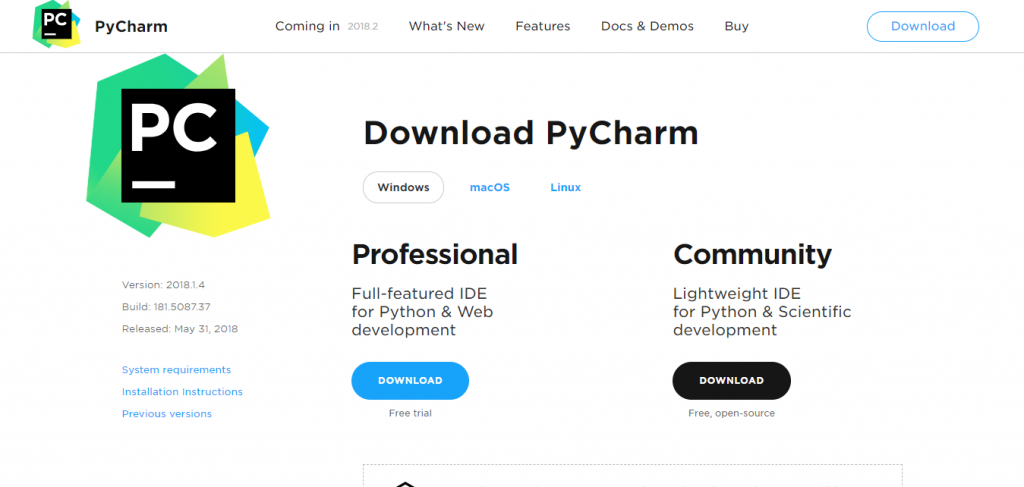

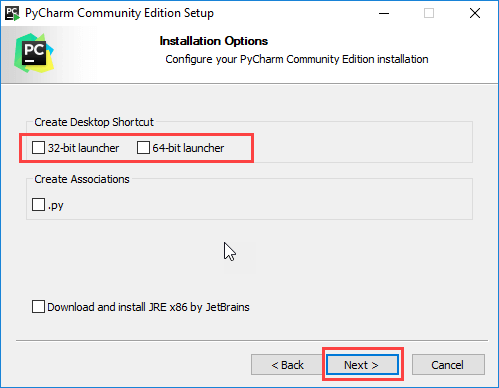
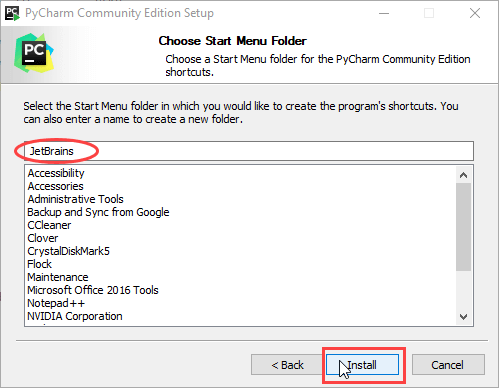
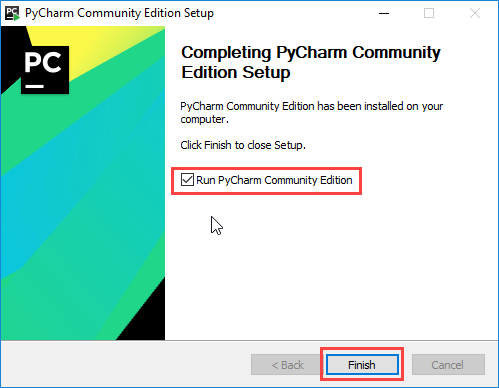
What tutorials are best to get started with learning Python?
You can refer to thenewboston YouTube channel for Video lectures on Python.
Can I install python on Windows 8? What is the minimum RAM and hard disk space required?
Yes you can install it on any OS. Minimum hard disk space for Python only is about 100 MB. However if you want to use Pycharm then you need more hard disk space.
I think that possibly is the best instructions given Sensible writting